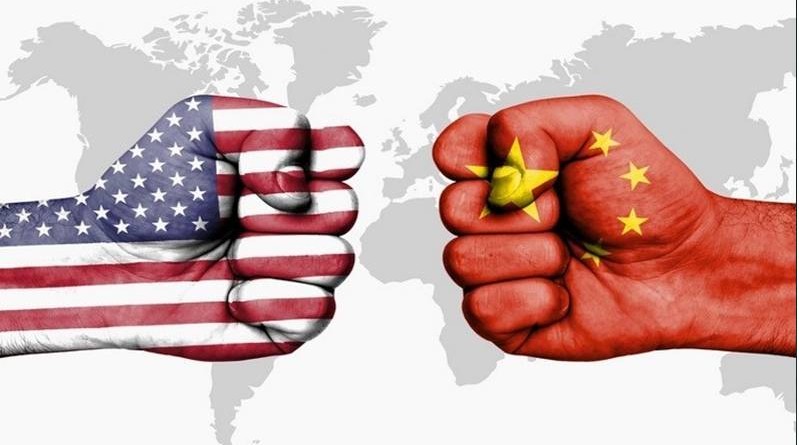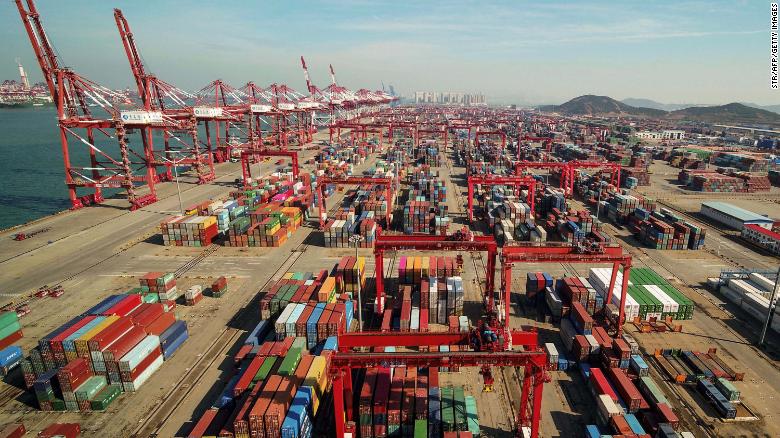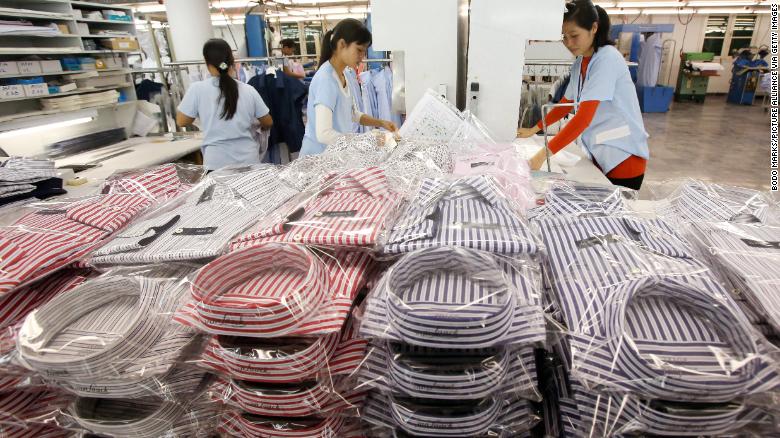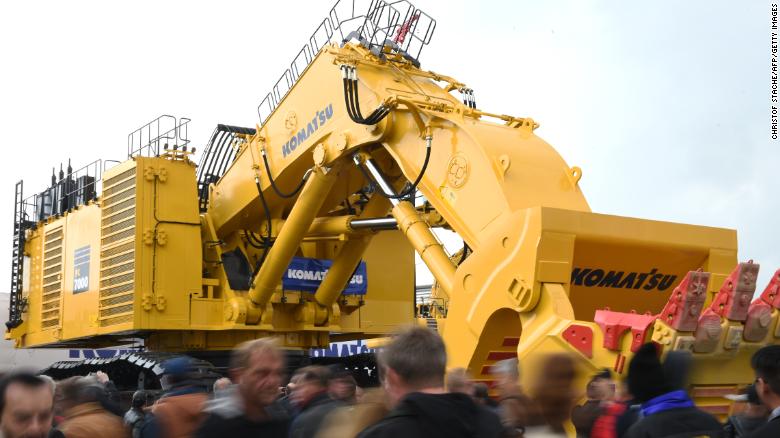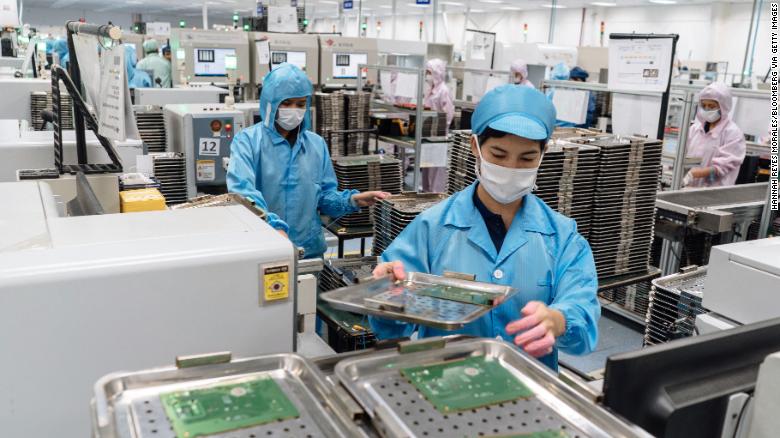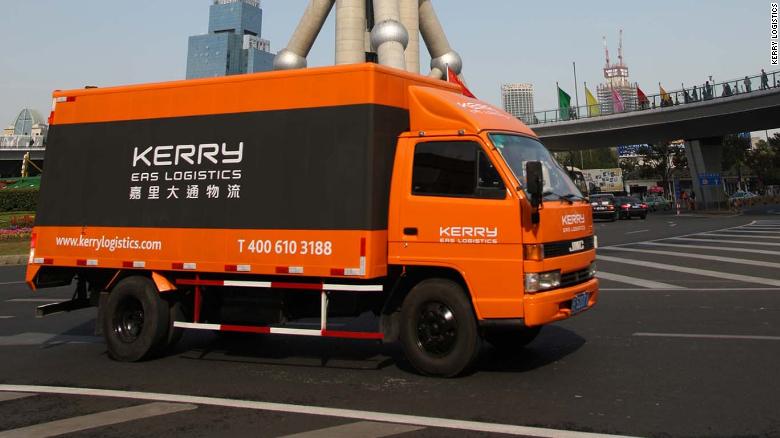The trade war is pushing business out of China, but not into America
US tariffs are prompting companies to move some production out of China, but it’s not going where President Donald Trump would prefer.
The trade war has made more than $250 billion of Chinese exports more expensive for Americans — from leather belts to refrigerators to motorcycles. The disruption to the world’s biggest trading relationship has electronics manufacturers, industrial machinery makers and fashion brands working on shifting some of their assembly lines.
“We are flooded by inquiries,” said William Ma, group managing director of Kerry Logistics, a Hong Kong-based firm that helps companies around the world manage their supply chains. “It all happens after the trade war.”
Many firms are keeping much of their operations in China, which offers a giant domestic market and advantages that businesses struggle to find elsewhere. But those that are moving aren’t flocking to the United States. Instead, they’re looking to transfer work to other Asian countries.
In a recent survey by two American chambers of commerce in China, one third of the companies who responded said they were looking to switch to production outside of China as a result of the trade war. Only 6% said they were considering moving business back to the United States.
Asia, not America
In some industries, the tariffs have accelerated the shift of manufacturing from China to countries in Southeast Asia, where labor is cheaper.
Steve Madden (SHOO), whose handbags have been hit by a 10% tariff, says it’s moving a significant chunk of its production to Cambodia and other countries. The company currently makes about 85% of its handbags in China, a figure that could drop to 50% or 60% next year.
“The shift is almost entirely due to the US-China trade conflict,” Steve Madden CEO Ed Rosenfeld told CNN’s Alison Kosik. “We have to prepare as though tariffs will be the new normal, but we are hopeful that cooler heads will prevail.”
Consumer tech brands are also looking to Southeast Asia. Hugh Lo, vice president of the consumer division at Taiwan’s New Kinpo Group, which makes electronics for clients such as Toshiba (TOSBF) and Samsung (SSNLF), says he has been inundated with inquiries from companies keen to transfer manufacturing out of China.
A year ago, his team got about one inquiry a week, he said. Now, it’s “maybe 30 times more.”
Lo said that TV and gaming device makers have been particularly interested in relocating. He declined to name individual companies.
Big industrial suppliers have been hit hard, too, with many of their products subject to the new tariffs.
Toshiba Machine said it’s moving some of its production of molding equipment in Shanghai overseas, and machinery maker Komatsu (KMTUY) told CNN that it plans to shift some of its assembly lines to Japan or Mexico.
Nathan Resnick, whose San Diego-based startup Sourcify helps thousands of businesses place orders with manufacturers across Asia, has also noticed a clear shift away from China this year.
In January, Chinese factories supplied as much as 90% of the orders his company helped place in industries like textiles and household appliances. Now, he estimates that figure has plummeted to about 50%, with the focus moving to countries like Thailand, Vietnam and the Philippines.
“It’s really just been recently,” Resnick told CNN. “I didn’t go to any of those countries last year.”
Leaving China isn’t easy
A lot of companies are unwilling to leave China, which has a range of advantages for manufacturing industries that are spread across Asia.
Many of the products US firms export from China have to fit exact requirements, necessitating specialized equipment and highly trained workers, according to Harley Seyedin, president of the American Chamber of Commerce in South China.
“Their supply chains cannot be adjusted in short order,” Seyedin told CNN.
China also boasts better roads, ports and power grids than most Southeast Asian countries.
“China just has such a great infrastructure,” Resnick said. “You go to some of these areas in the Philippines or Vietnam, and the ground surrounding the factory is not developed whatsoever.”
Starting from scratch in another country is a major step.
“It takes time,” said Ma at Kerry Logistics. “Things cannot be done overnight.”
His company is rushing to help businesses move their supply chains to other Asian countries.
“We definitely need to hire more people, rent more warehouses, buy more trucks,” he said.
Businesses that want to move their orders outside China face another problem: finding factories in the region that can accept them.
“I have factories that we work with in Vietnam that are booked up for the next year,” Resnick said. “Their production lines are full. And so you really do, at times, have to hunt and find factories that still have capacity.”
But when it comes to switching to US-based suppliers, there’s little interest.
“That’s not even been a consideration for any of the companies that we work with,” said Resnick.
– CNN

